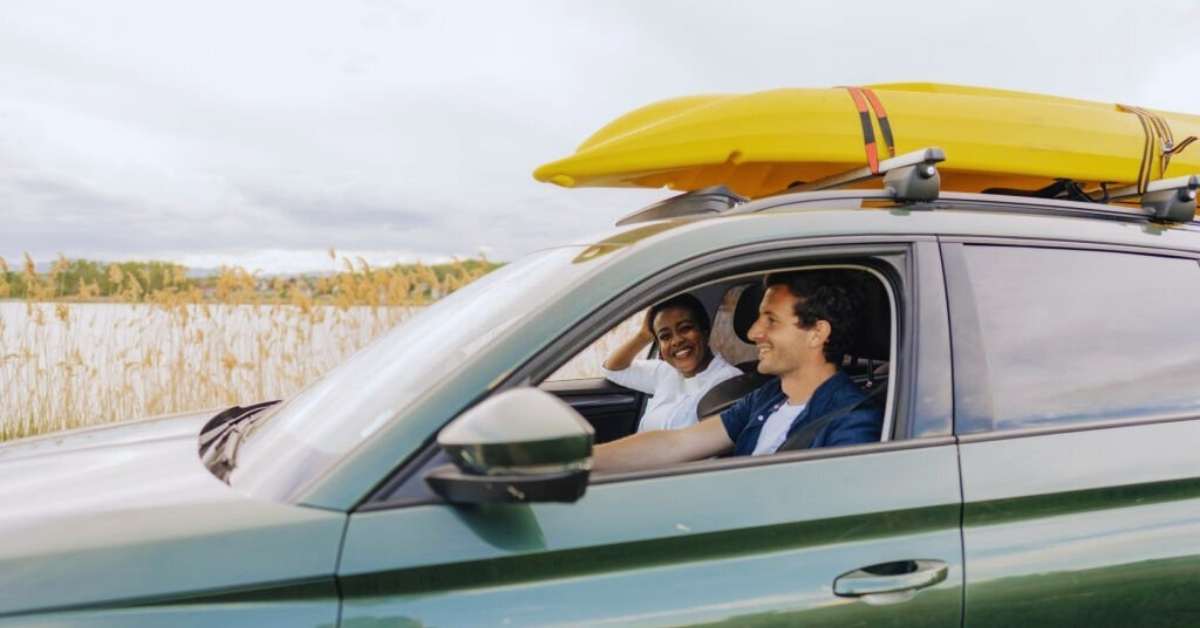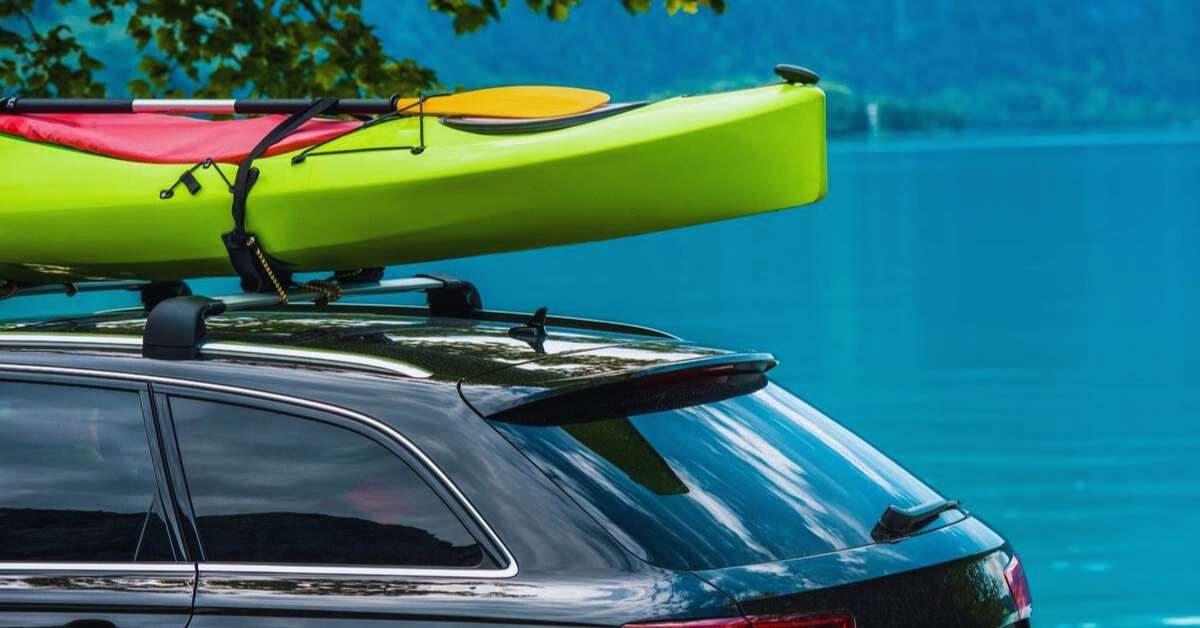Table of Contents
Introduction
Many outdoor enthusiasts transport their kayaks on top of their cars. However, it’s crucial to secure the kayak to avoid accidents or damage properly.
There are different ways to accomplish this, such as using roof racks, foam blocks, or kayak trailers. Each method has its pros and cons, so it’s important to select the most appropriate one depending on your car and type of kayak.
This article will provide you with a detailed guide on how to safely and efficiently transport a kayak on car.
5 Easy Steps to Transport A Kayak
Transporting a kayak on a car can feel overwhelming, especially for beginners. However, by following a 5 simple steps, you can safely and efficiently transport your kayak.
1. Choose the Right Roof Rack System
Choosing the correct roof rack system for kayak transport on your vehicle might make all the difference in safety and comfort.
First, choose a roof rack system that fits your car. Crossbars, roof rails, and roof racks are available. The roof rack system’s weight capacity is next.
Choose one that can securely support your kayak. Additionally, consider installation and removal simplicity.

Find a system that’s easy to install and remove from your automobile. Transporting the kayak safely is also important. Look for a roof rack system with straps or tie-downs to secure the kayak and prevent movement.
Finally, assess the roof rack system’s longevity and quality. It should endure and tolerate various weather conditions.
Following these simple procedures and picking the correct roof rack system lets you safely transfer your kayak on your vehicle and go on interesting trips.
2. Prepare Your Kayak
Transporting a kayak on your vehicle may sound difficult, but with a few simple steps, you’ll be on the lake in no time.
First, clear your kayak of debris. This will clean your automobile and protect the kayak. Next, get a robust roof rack or kayak carrier to attach the kayak to your vehicle.
They fit different kayaks and come in different shapes and sizes. After installing the roof rack or carrier, gently pull your kayak onto it, balancing it.
Secure the kayak to the rack using straps or bungee cords, inspecting for loose ends that might move during transit. Additional straps should be used to connect the kayak’s bow and stern to the front and back of your automobile for stability.
Make sure the kayak and straps are secure before driving. Your kayak is securely secured to your vehicle, ready for your next paddle. Drive carefully and be aware of your vehicle’s height and weight.
3. Load and Secure the Kayak
Lets load and secure the kayak, First, get a kayak roof rack, foam blocks or kayak cradles, and straps or bungee cords. Position the roof rack on top of your vehicle and secure it per manufacturer’s directions.

Next, carefully position and line the foam blocks or kayak cradles on the roof rack with the kayak’s hull. Lift the kayak onto the roof rack carefully and evenly.
Secure the kayak to the roof rack with straps or bungee cords, but don’t overtighten to risk injuring it.
Before driving, make sure the kayak is steady. Check the straps or cords occasionally throughout your trip to verify the kayak is secure.
Following these simple procedures, you may safely transfer your kayak and enjoy your next water excursion.
4. Double-Check Everything
When transporting a kayak, double-check everything to guarantee safety. Purchase a solid kayak roof rack system first.
Make sure the rack is firmly connected and can support the kayak. Attach the kayak to the rack using sturdy straps or ropes. To center and balance the kayak on the roof, tie it down securely.
Make sure the straps are snug and pull them to prevent loosening throughout the drive. For added stability and to minimize swaying during transit, bow and stern lines are advised.
Remember to arrange the kayak with the bow pointing forward to reduce wind resistance. Before driving, check everything one final time.
Check straps, ropes, and knots for wear and looseness. Shake the kayak gently to secure it. Double-checking everything gives you piece of mind that your kayak is securely tied to your vehicle and ready for a fun water excursion.
5. Drive Cautiously
Following these simple procedures to transport a kayak safely on your automobile is straightforward.
First, get roof racks or a kayak carrier to fasten the kayak to your vehicle. Next, center and align the kayak on the racks or carrier. Secure the kayak to the racks using straps or tie-downs to prevent shifting during transport.

Before driving, double-check the straps for tightness. Add safety flags or lights to make your kayak more apparent to cars.
Drive slowly and keep a safe distance from other cars since the kayak’s weight and size may impair your car’s handling.
Finally, look for obstacles that might harm the kayak or automobile in low-clearance situations like bridges and tunnels. Following these procedures, you may safely carry your kayak and have a water trip.
FAQs
Q1: Can I Transport Any Type of Kayak on My Car?
A: Most kayaks may be carried on automobiles using roof racks, but size and weight must be considered.
Make sure your car’s roof rack fits your kayak. Larger kayaks may need roof racks or extra support for safe transport.
Q2: How Do I Choose the Right Roof Rack System for My Kayak?
A: Consider your car’s make and model, kayak type, and loading technique before choosing a roof rack solution.
Research roof rack choices and contact experts. Find a rack with secure connection points, weight distribution, and little wind resistance.
Q3: Can I Transport Multiple Kayaks on My Car?
A: If your roof rack system can hold numerous kayaks, you can drive them. Some roof racks hold numerous kayaks.
Distribute the weight uniformly, attach each kayak, and use tie-down straps to prevent movement during transport.
Q4: How Do I Prevent Damage to My Car’s Roof and Kayak?
Prevent damage by cushioning or covering your car’s roof before transporting the kayak. This prevents dents and scrapes.
Use foam or padded blocks on the roof rack to cushion the kayak. prevent over-tightening the kayak straps to prevent pressure points.
Q5: Can I Drive at Normal Speeds While Transporting a Kayak?
A: Drive slowly and respect traffic laws while carrying a kayak. The weight and height of your car’s roof might effect its handling and fuel economy, particularly at high speeds.
Cornering, changing lanes, and passing under low-clearance buildings need caution.
Q6: Do I Need Bow and Stern Lines in Addition to Tie-Down Straps?
A: Bow and stern lines are essential for automobile kayak transport. These ropes keep the kayak from moving forward or backward, particularly during rapid stops or starts. They work well with tie-down straps to secure the arrangement.
Q7: Can I Open My Car’s Sunroof or Windows While Transporting a Kayak?
A: Avoid opening your car’s sunroof or windows while carrying a kayak. Open windows increase wind resistance and automobile aerodynamics, lowering stability. For a safe trip, shut and secure all windows.
Q8: What Should I Do If It Rains During Transport?
If it rains while moving your kayak, bring a waterproof cover or tarp. A cover may protect your kayak from rain-borne filth and debris, even though many kayaks can survive water. Secure the lid to prevent it from slipping during transport.
Conclusion
To safely transport a kayak on your car, it is crucial to take proper measures that prioritize the safety of both the driver and other road users.
One important recommendation is to use a secure and reliable roof rack system specifically designed for kayaks. Make sure to properly secure the kayak to the roof rack using strong straps or tie-downs.
Also, ensure that you do not exceed the weight limit of both the roof rack and your car’s maximum load capacity.
By following these guidelines, you can transport your kayak on your car safely and efficiently while minimizing any risks or accidents.
